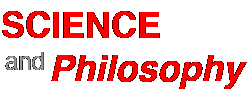But for the rules of quantum mechanics, the world of matter would be a sea of electrons and nuclei at the lowest energy level. As understood by the quantum mechanical rules of interaction, the electrons are associated with nuclei in discrete orbits of quantized energy values.
If the electron distribution of quantum mechanics stood as the sole governing principle, the world would be a sea of nuclei and quantized low-level electrons, but the Pauli exclusion principle means there are discrete associations of nuclei and electrons, so that the universe at lower temperatures operates as a world of ordinary atoms leading to chemistry, structure, and all other rules we are familiar with in working with ordinary material. The sophistication of distributing electrons in energy levels comes from the Pauli principle.
Before looking at the principle in detail, let us restate the rules of chemistry in terms of emergence. In the study of the physical states of systems of atoms, the agents are nuclei and electrons and the rules are quantum mechanics and electricity and magnetism. The pruning relations that severely limit the eigen states (allowable atomic configurations) of matter are the solutions to the Schrodinger equation and the Pauli exclusion principle. The emergent behavior is the content of the science of chemistry: the periodic table of the elements, the rules of covalent bonding, ionic bonding, and metallic bonding, and the bulk properties of solids, liquids, and gases.
The simple statement of the exclusion principle is that no two electrons in an atom can have the same four quantum numbers. This leads to an understanding of the shell structure of atoms, the facts of chemical valence, the spectra of atoms and molecules, and the structure of crystals... It is a pruning rule deep within the laws of nature that only permits behavior of a certain symmetry character. It selects a set of states from all possible states.
Another feature of the exclusion principle is that it begins to illuminate how the whole may be different from the sum of the parts. For the exclusion principle has nothing to say about the behavior of an individual electron, yet it applies to a system of two or more electrons. The Pauli principle is a way of understanding why entities show in their togetherness laws of behavior different from the laws that govern them in isolation…
The previous argument is worth restating. The emergence of the periodic table has a special character. The pruning rule is apparently a deep principle of physics, but it is unrelated to the other laws of physics. Applying the rule and developing the consequences allow us much detailed information about the emergent higher hierarchical levels. A whole array of new phenomena come into play that did not previously exist. We can move from the properties of atoms to the properties of molecules and collections of molecules.
This emergence is so intriguing because it leads us to the enticing question of whether, at higher hierarchical levels, there are not other nondynamical principles that introduce new kinds of behavior. Since all of chemistry emerges from one nondynamical rule, might there be another rule that will illuminate biology, or a rule that will give insight into cognition? The existence of the Pauli principle, which totally organizes the chemical world, is a powerful incentive to look for such rules at higher hierarchical levels…
The Pauli principle indicates that our reductionist systems are not formally closed systems, and within science itself there is room for new kinds of pruning that will illuminate the emergent transition between hierarchies. This approach opens the way to thinking about problems. At each stage, any new selection principles can be subject to experimental verification, so that it is not a case of “anything goes.” Nevertheless, new approaches are out there to be tested. There is an incompleteness in our current science.
Of
all the emergence criteria, I find the Pauli principle the most
encouraging in terms of eventually understanding higher levels.
At any level there may be a presently unknown selection that will
illuminate the hierarchical emergence in some way that we don’t
understand. That emboldens us to plunge ahead in our search for
new laws of emergence that we have not dreamed of.


